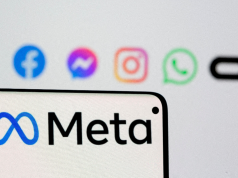
An architecture student decided to conduct an experiment on Instagram by tagging a famous aerospace research center in her posts to see how far people will believe content posted on social media.
Sarah Abouelkhair created several Instagram Stories with a simple picture of a rocket launching into space. In her experiment, she tagged the account of the National Aeronautics and Space Administration and declared that she has an “idea” for them.
Abouelkhair proposed that the aerospace research center should grill “tons of chicken meat” whenever it would launch a rocket into space. She suggested that a “giant BBQ party” could happen if NASA decides to do it.
According to her, the idea could possibly conserve energy, make NASA employees happy and increase their productivity, get her a job in the agency and even “end world hunger.”
Abouelkhair conducted a poll and once more tagged the official account of NASA, floating her idea of “saving the world one BBQ at a time.”
Abouelkhair then shared “screenshots” of the agency supposedly replying to her, as well as other companies and big-time personalities such as Gordon Ramsay and Ellen DeGeneres.
The architecture student also uploaded a picture of her standing in front of a NASA landmark to show that the agency supposedly invited her to their office.
About the social media experiment
Sarah Abouelkhair explained that she actually informed the companies about her social media experiment when several media outlets got wind of the posts.
She manipulated the screenshots uploaded in her Instagram Stories to make it appear as if companies and personalities had replied to her. An actual disclosure of her message to NASA reads:
“Hello! You’ve been getting tags from me on my (Instagram) story as part of a social experiment I’m conducting on the futility of social media and how people with no real content and maybe even a fake content can easily get fame. If you have any questions please tell me and find the full story on my highlights.”
Abouelkhair also posted a supposed message from United States President Donald Trump—known for his crusade against “fake news“—as a way to drive her point on the issue of authenticity in viral social media posts.
The student also revealed that companies whom she didn’t tag in her posts have sent her “amazing gifts” after her social media posts gained traction.
In her later Instagram Stories under the same series, it could be deduced that Abouelkhair did it for her thesis.

How social media posts became viral
While Sarah Abouelkhair is not an official social media influencer, her posts immediately gained traction due to several factors that are commonly practiced by actual influencers.
Forbes Magazine through their article “7 Ways To Up Your Chances Of Going Viral On Social Media” noted some tricks that Abouelkhair used to make her posts viral and talked about.
According to them, a person must “tell a relatable story” in the content to earn a connection with social media users. They wrote:
“One of the things that resonates most with modern social media users is a relatable story. Users are much more likely to share posts with their friends and engage in the comments if they connect to the story you’re telling on a personal level.”
Abouelkhair didn’t have any pertinent data or information in her content but her suggestion on making a “giant BBQ party” during NASA’s rocket launch resonated with regular people who are most likely into food—and therefore, can relate with her sentiments.
Forbes additionally cited in their article that a content must be short and concise on its messages. They reported:
“Modern social media users have very short attention spans. Make sure the content you produce is easy to read, and can be digested by a user in 10 seconds or less. Posts with too much text or videos that are too long will quickly be ignored by users, and your chances of going viral will be much lower.”
The student also utilized Instagram’s feature on conducting polls, increasing her user engagement and overall traction on social media.
Forbes noted that such a skill makes users more “involved” and in turn, increase content viewership.
“One way to get users engaged is to make your content interactive. For instance, post a quiz on Facebook or make a poll on your Instagram story.”
“Users are much more likely to engage with your content if you ask a question that they want to voice their opinion on… This is a great way to get users involved and increase viewership in as many feeds as possible.”
Why even inauthentic content goes viral
Abouelkhair previously mentioned in one of her posts that some companies have sent her freebies even though they were not mentioned in her social media experiment.
People were also quick to believe in the messages that she has supposedly received from different companies, especially when she accompanied her posts with a picture on NASA’s supposed headquarters.
This earned her a high rate of engagement but she disclosed that it was an experiment done to see “how people with no real content and maybe even a fake content can easily get fame.”

The Irish Independent cited that there are seven reasons why such cases happen. According to them, information is considered a “social currency” nowadays where people use it to connect with others and engage in discussions.
Digital anthropologist Nik Pollinger shared, “We also prize information that can be used as social currency to build relationships with our networks or information that, through association with it, signifies something about our identity and group affiliation.”
“The more sensational the story we share with others, the more social value it can have,” he continued.
Senior psychology lecturer Jens Binder of the Nottingham Trent University added that sharing information on social media is usually done out of emotional reasons.
“We consume news not just because of the facts in there, but also to make sense of the world, to confirm our notion of how things are working ‘out there’. The more people share my sense of understanding, the more I am convinced that I got it right,” he shared.
“Emotional and dramatic fake news items will attract more attention, pretty much like real news of that sort. However, the key thing here is these news items confirm people’s world view, for example, creating more outrage targeted against opponent groups or by incriminating those people that we’d like to see incriminated.” — Artwork by Uela Altar-Badayos









